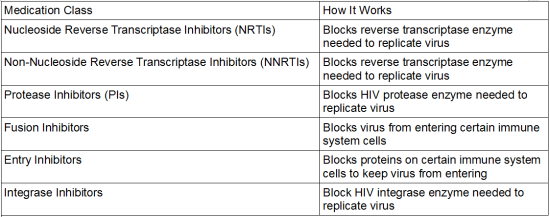HIV, or Human Immunodeficiency Virus, is a virus that compromises the immune system, making those infected more susceptible to other diseases. HIV can only be contracted by coming into direct contact with bodily fluids (such as blood or semen), which may make it seem easily avoidable. However, because of the damage it can do if left untreated, HIV is a very serious disease.
Over the past 50 years, the HIV mortality rate has dropped from a startling 78% to a mere 15%. In other words, thanks to multiple scientific breakthroughs over the last few decades, an HIV diagnosis is no longer a death sentence. Though there is still no cure for the HIV virus, it is now very treatable through a variety of medications.
Image Source: Science Stills/Visuals Unlimited, Inc.
Out of the dozens of FDA approved HIV medications, there are six different types. Multiple medications are given in combination to combat the virus, with the average person combining at least three. The medications that are taken by each patient can differ, as the drugs prescribed are chosen based on the side effects they cause, their interactions with other medications, and the general health of the patient.
The combination of these HIV treatments is called antiretroviral therapy (ART), in which the medications work in conjunction with each other to prevent the replication of the virus. Most of these drugs work by blocking the enzymes that HIV requires to replicate, though some types of medications may work by preventing the virus from entering the cells completely. Additionally, some can be taken to simply enhance the potency of the other drugs.
A table of the different types of HIV medication can be found below.

Different classes of HIV medications.
Image Source: Dorothy Kenny
Though multiple medications are usually needed to treat HIV, there are some that are already made of a combination of different drugs, therefore allowing the patient to take fewer pills. Combining HIV medications into one pill not only provides convenience for the person taking them, but can also be more cost efficient.
Though HIV cannot yet be cured, the purpose of ART is to lower the amount of the virus found in a person’s body. Taking these medications can not only increase the lifespan of someone infected with HIV, but also reduce the risk of transmitting the virus to others. With the use of the right medication, it is definitely possible to live a long and happy HIV-positive life.
Featured Image Source: Pills 3 by e-Magine Art











Hello World!
Hello World again!
Debugging